SaaS customer support: Best practices from real-life case studies

Director of Content

Tags
Share
So, you’ve created a successful SaaS (software as a service) business and attracted lots of customers who are interested in your product.
Now, how can you keep those customers happy? Well, you’ll need great SaaS customer support. And guess what, I work at a SaaS company with a customer support team.
In this guide, I’m going to walk you through tips and insights from our own support team’s leaders (almost all of whom have written at length about this topic on the Dialpad blog before) and also how other SaaS companies are running their customer support teams.
But first…
What is SaaS customer support?
And more importantly, how is it different from regular customer support?
When we talk about customer support, this tends to be a very broad umbrella term that includes everything you do for customers to keep them happy and satisfied.
When you’re selling a SaaS product, this narrows things down a bit. Because you’re selling software, your “customer support” will likely cover things like troubleshooting technical difficulties, helping customers set up accounts, and answering general questions in addition to making sure customers are getting the most out of your product.
With SaaS businesses, customers usually expect to be able to reach your support team through phone or live chat support, and many contact centre teams also have self-service options like chatbots and IVR systems.
👉 Dialpad tip:
Learn more about omnichannel customer service platforms.
Metrics to include in your SaaS customer support strategy
Now let’s look at key metrics you should be aware of, with tips from our very own customer experience and customer support teams. This list is by no means exhaustive, so use this as a starting point.
Quick side-note: Not sure about the difference between “customer support teams” and “customer success teams?” These terms (usually) aren’t interchangeable. Support teams tend to be more reactive and provide support after your customers have reached out, while customer success teams tend to be more proactive and are more focused on helping your customers be successful using your software. Customer experience teams, on the other hand, might include both!
Customer satisfaction score (CSAT)
A CSAT score isn’t a metric that’s unique to SaaS businesses. You’ve probably bought clothes or electronics before, and may have been asked to fill out a customer satisfaction survey about how you felt about that interaction with the business. Something like, “How was your experience with agent X?” for example.
With Dialpad Ai Contact Centre, you can create a customer satisfaction survey that will automatically play at the end of a customer call:
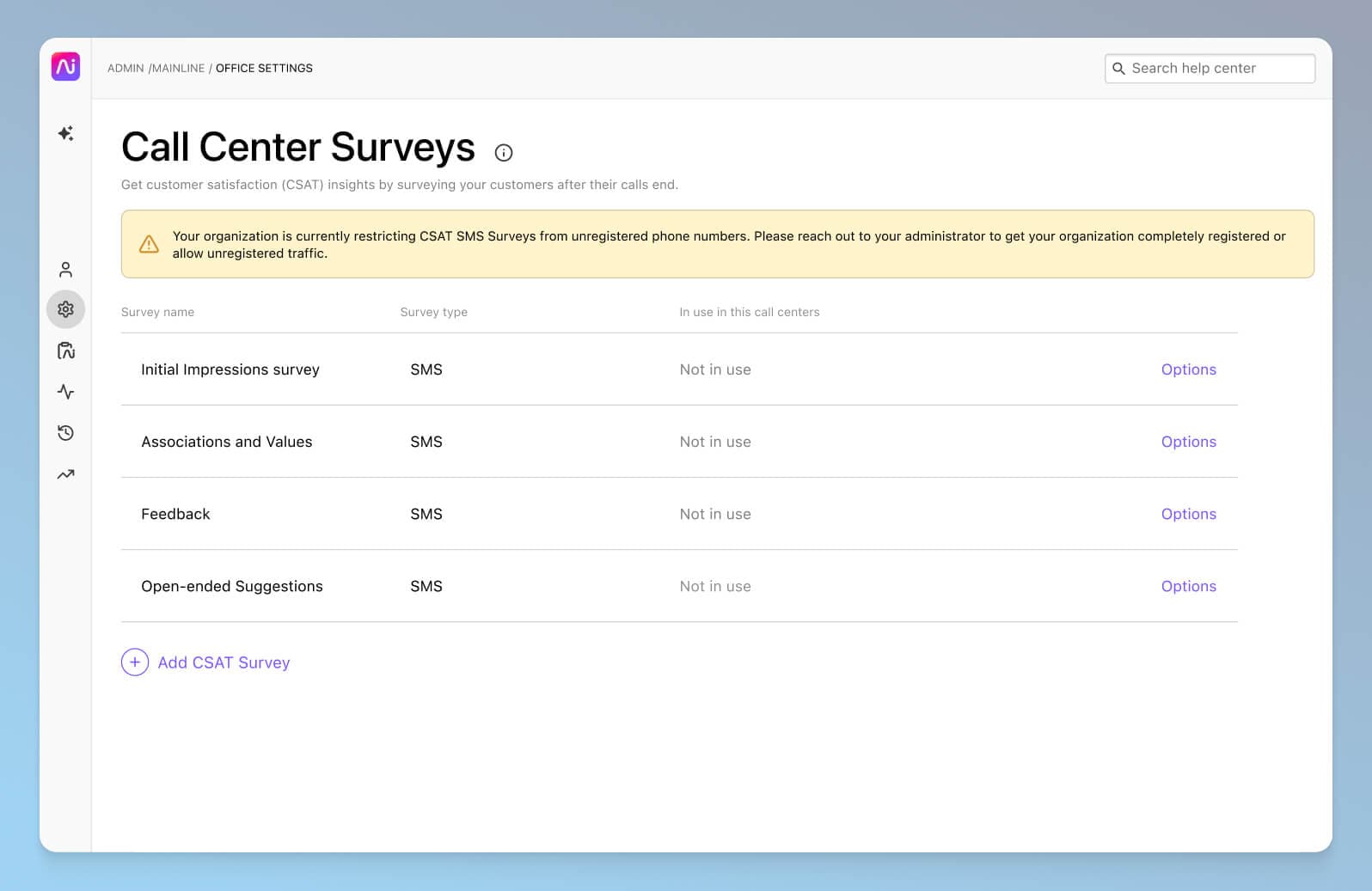
“[Having] A root cause analysis team is another great option for tracking customer satisfaction, especially if you’re dealing with lots of escalations in your contact centre. This team can take data, like a not-so-great CSAT score, and drill down to find the root cause of dissatisfaction (probably how the team got its name)”, says Renee, a Support Development Coordinator here at Dialpad.
But Dialpad Ai can actually do more than that. One thing that we hear time and time again is that SaaS businesses’ executives and CEOs love CSAT scores—but the problem is that not a lot of people actually fill out those surveys.
In fact (depending on the industry and specific business of course), we've found that on average only about 5% of customers actually fill out CSAT surveys. On a related note, usually only the angriest—and happiest—customers actually bother to respond to these surveys, which means your CSAT answers are likely to be very skewed and not representative of how your customers feel overall.
Dialpad's industry-first Ai CSAT feature is designed to solve exactly that. Not only can our Ai transcribe calls and analyse sentiment in real time, it can also infer CSAT scores for 100% of your customer calls thanks to its hyper-accurate transcription feature. The result? A much more representative sample size for CSAT scores, and a more accurate understanding of how satisfied your customers really are:
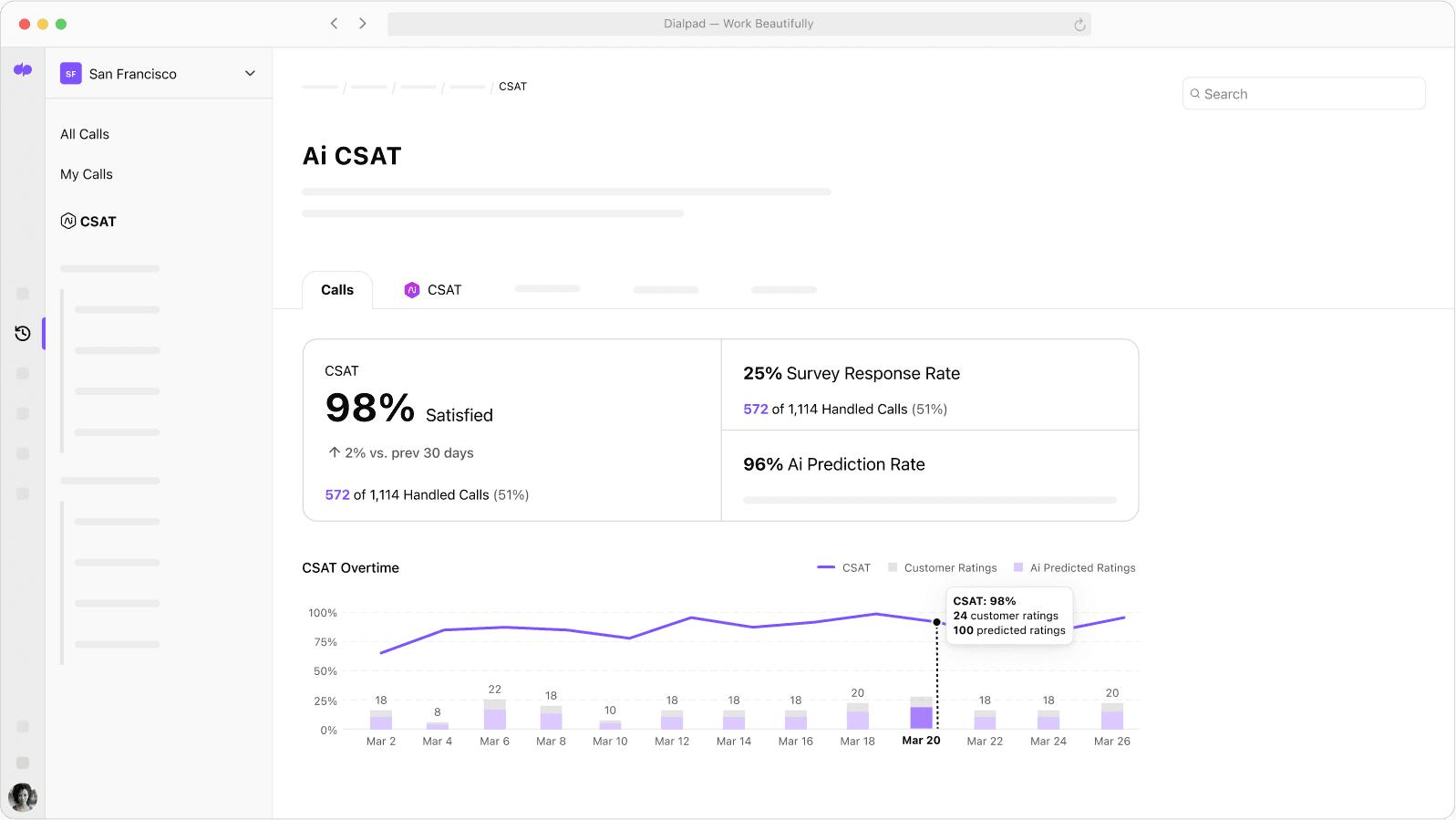
TL; DR - Ai CSAT gives you a lot more opportunities to gather valuable customer intelligence.
Customer retention rate (CRR)
When it comes to SaaS businesses, customer retention is a very important metric since we’re a subscription-based business—we rely on customers paying on a monthly or annual basis.
The customer retention rate (CRR) refers to the number of customers a SaaS company retains over a certain period of time. To calculate your customer retention rate:
Take the total number of customers you have at the end of a specific time period (like a month or a quarter).
Subtract the number of
new
customers you acquired over that time. (Say you had 100 total customers over the span of a month, and 50 of those were new customers. So, you'd subtract 50 from 100.)
Divide by the number of customers you had at the
beginning
of that period.
Then, multiply that by one hundred.
That's your CRR!
There are a plethora of reasons why a customer may choose to stop subscribing to a service, and you may never be able to find out exactly why they went. However, one way to gain a better understanding is to ask customers to complete an exit survey.
This is one of the most valuable types of customer feedback you can get. Even though it may not be fun reading negative feedback from customers who left you, that feedback is essential for helping your support team (and product team!) improve and provide the best possible customer experience.
📊 If you haven’t already heard...
Customer acquisition is important, but retention is king. I’ve lost track of how many studies and statistics I’ve seen now that talk about how customer retention is X times cheaper than acquisition.
Customer churn rate
On the opposite end of the spectrum is your customer churn rate. Like customer retention, churn rate is a metric that’s heavily used by SaaS companies.
Churn is where your customers cancel their SaaS subscriptions and “churn out.” I’ve worked at six SaaS companies now, and churn was a key metric in every single one (for good reason).
If you aren’t meeting customer needs or don’t have great customer support (“good” customer support isn’t always enough to set you apart anymore), it’ll likely increase your churn.
The customer churn rate calculation is similar to the customer retention metric. To calculate it, use this formula:

Dialpad Ai Contact Centre actually has a few unique features that can help when it comes to retention and churn. Say you think you’ve been getting a lot of complaints about a new feature—let’s call it Feature X—and you want to see exactly how often this comes up in customer calls.
In Dialpad, you can create a “Custom Moment” to track every time a certain keyword or phrase is spoken on a call. In this case, you could create a Custom Moment to track every time Feature X pops up on a call:
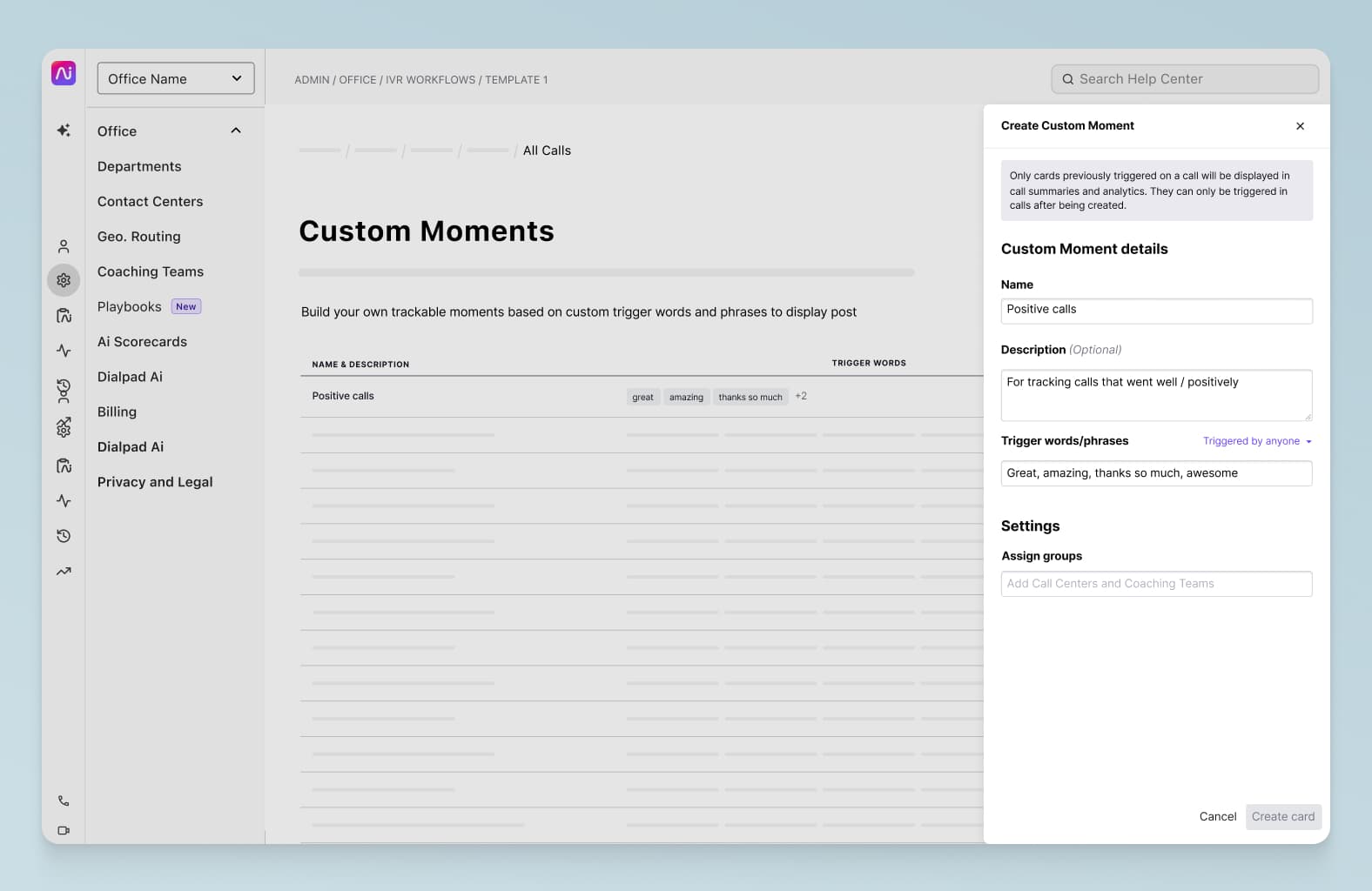
Then, you can see how those mentions are trending over time from Dialpad’s analytics dashboard. If there really is a spike, you can just click into the transcripts or recordings for those calls to get more context.
Then there's the live sentiment analysis feature, which is also powered by Dialpad Ai. Besides transcribing customer calls in real time, it can also detect the sentiment of a call. That means that even if your supervisor is overseeing 10 or 20 agents on active calls, they can easily see if a call is going south:

If they do see a call with negative sentiment, they can open up the real-time transcript to see what’s been happening in the call, and then decide if they need to jump in to help the support agent.
👉 Dialpad tip:
Besides your customer churn rate, there’s also agent churn rate, which is the rate at which your contact centre employees leave your company. If you have a great customer service agent, do your best to keep them! It’s no secret that contact centres experience some of the highest employee turnover rates—which is absolutely wild when you consider that these are important customer-facing team members.
Average handle time / average speed to answer
This is more of a general customer support metric, but if your SaaS business takes inbound calls, you should know this number.
A good contact centre platform or customer support software should be able to show you your average handle time and average speed to answer.
The average handle time (AHT) is the average duration of calls between agents and customers. It includes the entire transaction, from when the customer initiates the call to after-call work (like surveys, for instance).
Brynn, our Team Lead in Support QA and Development, explains how AHT plays its part in contact centre shrinkage: “The work doesn’t stop once you’ve managed to reduce your shrinkage to an acceptable percentage! Measure shrinkage regularly (or as regularly as you can), and try to judge it alongside other metrics—looking at one data point in a vacuum generally isn’t helpful.”
Dialpad Ai Contact Centre, for example, shows you all your key call metrics like missed and abandoned calls, and average speed to answer:
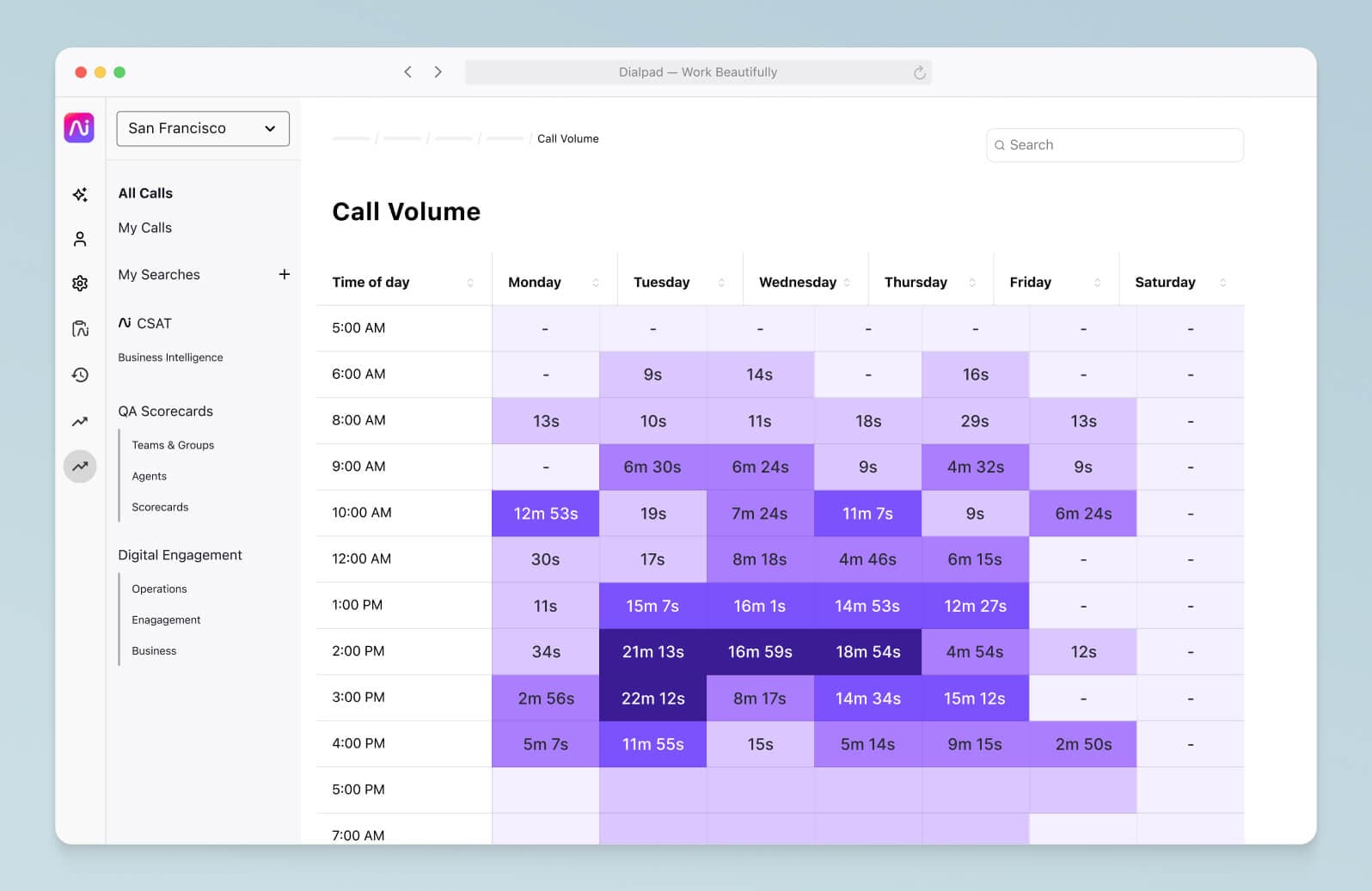
The best thing: You don’t need to contact support or IT, or wait for someone to pull the data for you—it’s right there at your fingertips.
There’s also an in-queue callback feature in Dialpad, where you can set minimum and maximum call queue lengths and let callers request a callback instead of waiting on-hold:
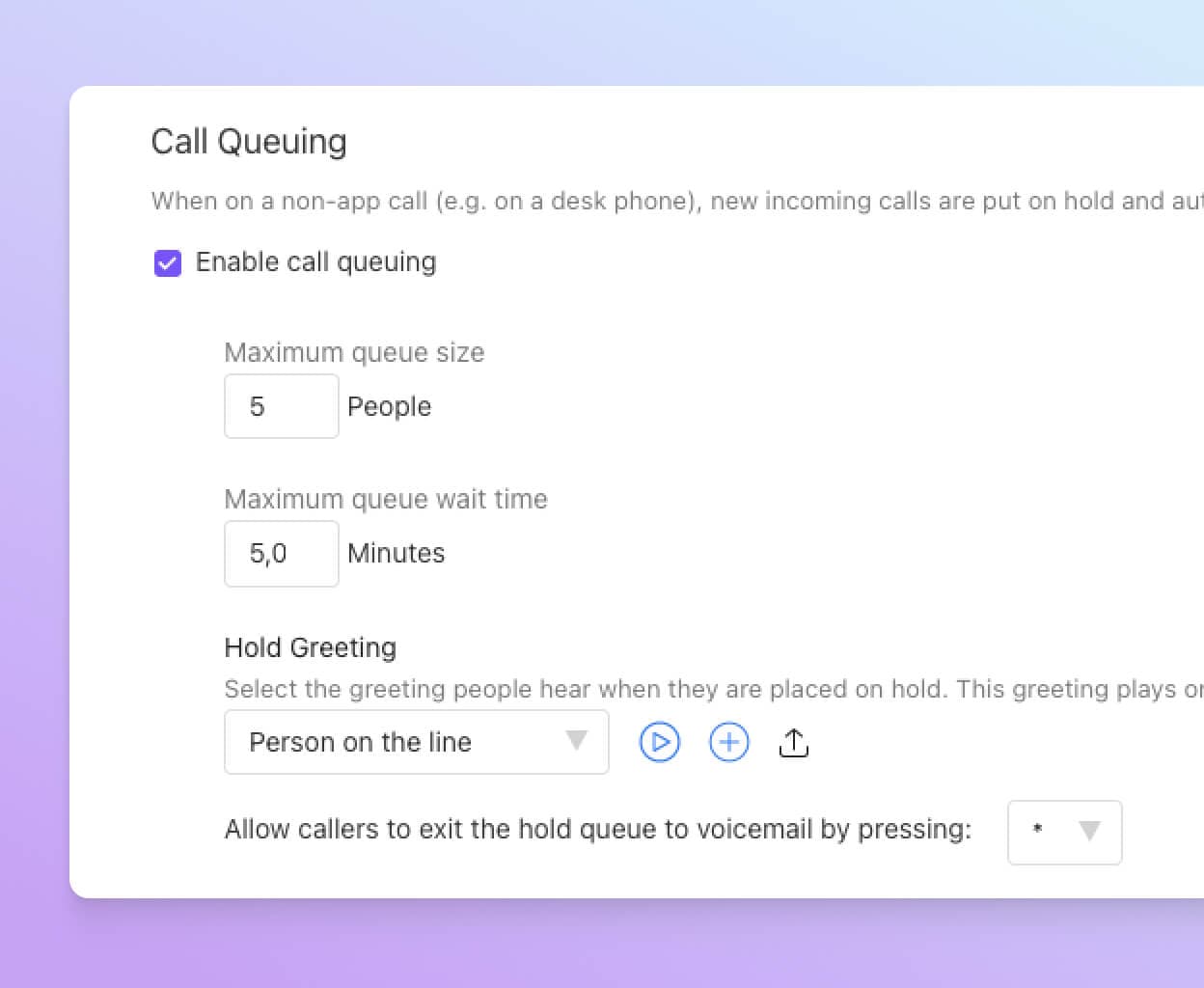
An important thing to keep in mind is your customers’ expectations in terms of response times can vary depending on the channel that you’re getting support requests through. For example, if someone sends you a social media message, they might expect to get a response much faster than if they submitted a support ticket or emailed you.
This is also a good reason to take an omnichannel and self-service approach to your SaaS customer service strategy. If you’re struggling with long response times and frustrated customers, why not use an FAQ page, chatbot, or online knowledge base to deflect some of those calls from your help desk team?
One neat thing about Dialpad Ai Contact Centre is that not only can you manage all your typical communication channels with it (including phone calls, video meetings, and instant + SMS/MMS messaging), but it also comes with automations like chatbot functionality.
Want to create a conversational chatbot for your website? Just choose a few key questions you want your chatbot to answer, and use the drag-and-drop builder to create that dialogue:
To take that a step further, your agents can also handle all your social media messages from Dialpad’s platform, including WhatsApp, Facebook Messenger, and more:
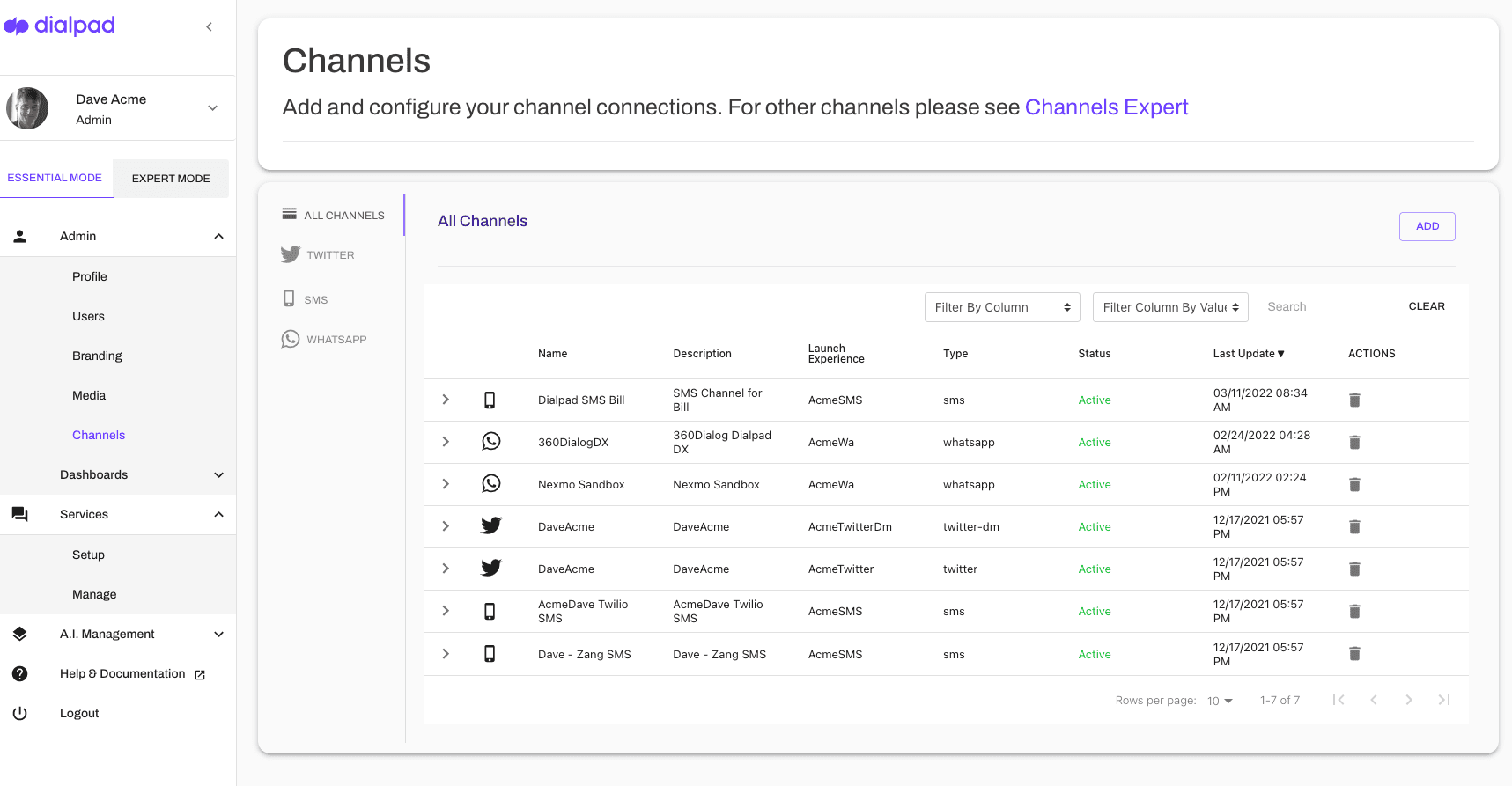
Monthly recurring revenue (MRR)
Another SaaS-centric metric, MRR is an acronym that I’ve heard non-stop ever since I started working in SaaS companies.
When customers are happy with your service, they’re willing to keep their subscriptions and continue to pay for it. The more monthly or yearly subscribers you manage to sign up, the more monthly recurring revenue (and annual recurring revenue, or ARR) you generate.
This is important because it makes it easier for your business to manage cash flow and projections. Predictability is huge when it comes to SaaS—if your subscription-based business isn’t consistent or reliable, it impacts your budgeting, hiring, product plans, and a lot more.
SaaS customer support best practices: 6 real-world examples
1. Make sure your contact centre software integrates with your CRM: Rocket Matter
Rocket Matter is a legal tech software company, and what’s unique about them is that even though they’re technically a SaaS company, they also serve customers in a highly regulated industry: law.
So, the contact centre platform that Rocket Matter uses also needs to be compliant. “Dialpad is secure and compliant which is a must, but it’s also so easy to use,” says Jeff, their CRO. “Because of the Dialpad and Salesforce integration, our team is able to pack up our laptops and continue providing the 7-time Stevie Award-winning service no matter where we are.”
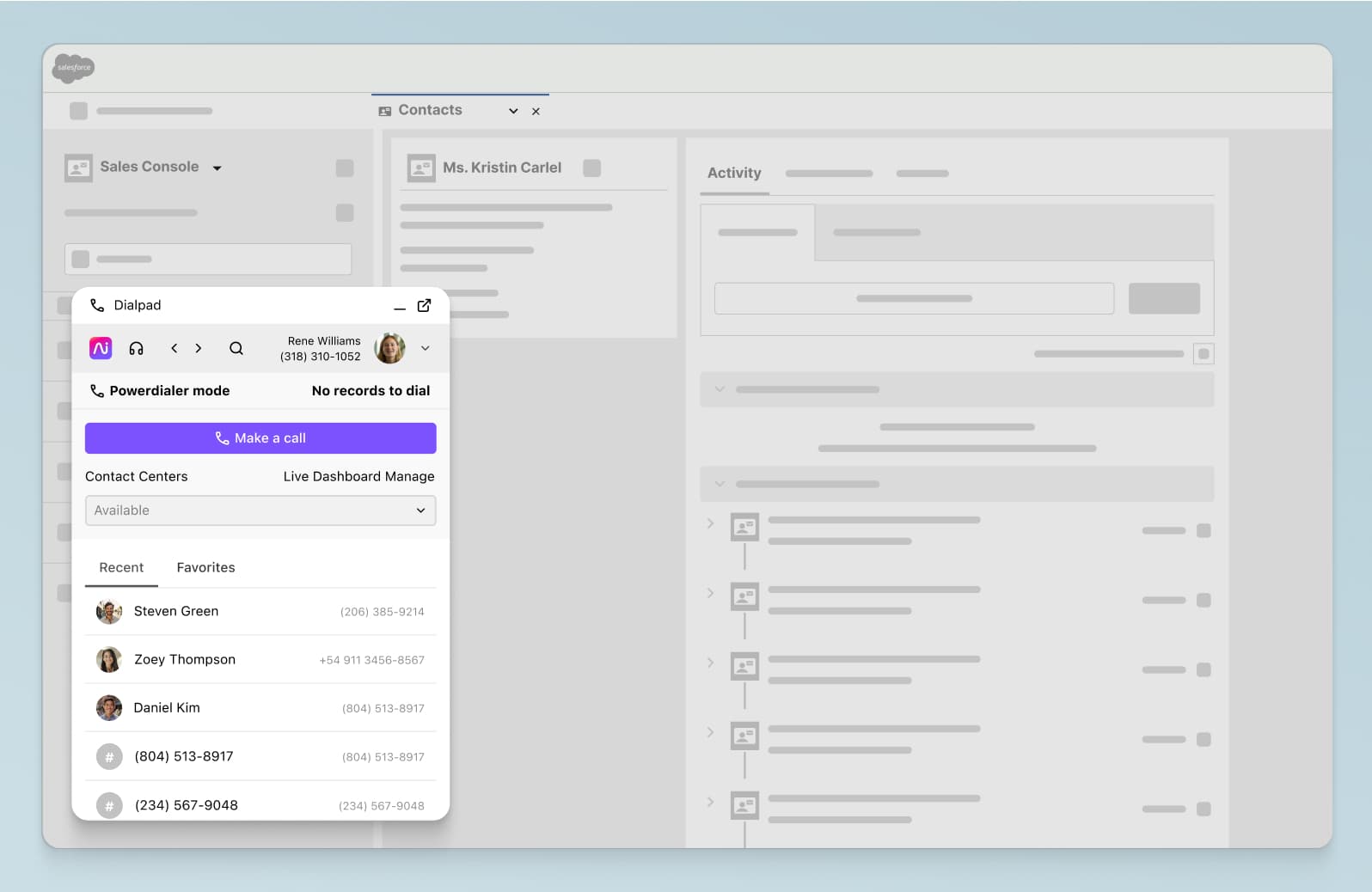
💡 Fun fact:
Dialpad Ai Contact Centre also integrates with other popular CRMs like HubSpot and Zoho CRM. And if you want to build custom integrations with more niche tools, you can do that too with the open API!
2. Create a smooth phone support experience: CureMint
CureMint is a company that helps dental practices grow faster with its all-in-one procurement platform. With over 700 dental office customers, they needed a good customer support system—or at the very least, a robust business phone system that could allow them to handle customer support.
Specifically, they need a phone system that could route inbound calls to the right department, and also a simultaneous ring feature that could ring multiple devices or phones at the same time to make sure that no one misses a call. They ended up getting both with Dialpad.
Brad Springer, VP of Success at CureMint, says, “Dialpad’s ability to control where calls go and make sure customers get to the right person quickly and easily is crucial to our customer-focused success team.”
In fact, they can easily adjust routing options with just a few clicks:
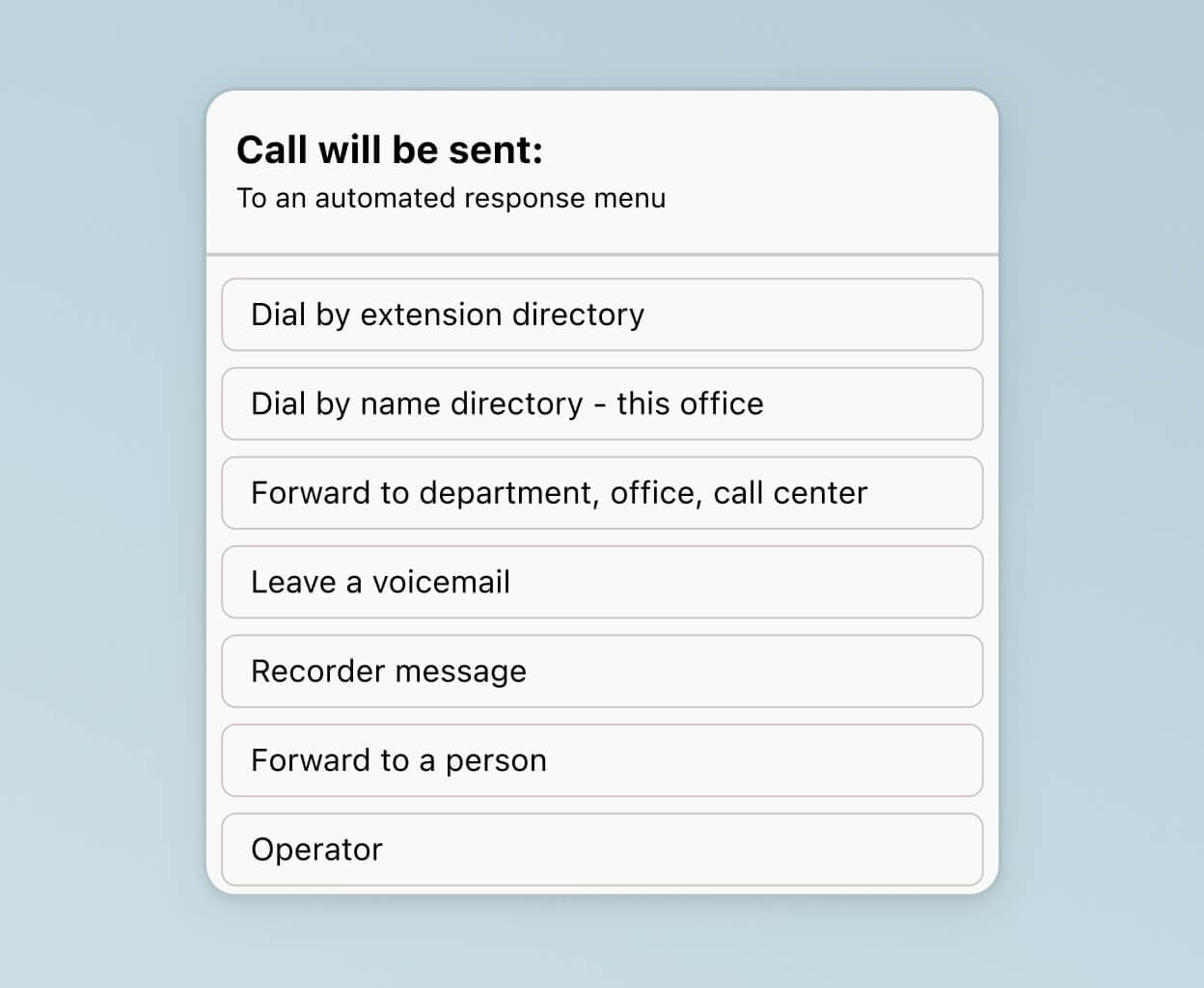
3. Know your analytics: Stax
Stax is a SaaS platform in the financial services industry. The business was looking for a way to unify communication—which was a challenge because they had over 200 employees to keep connected. And with a growing customer base, Stax was quickly becoming a 24/7 business, which meant it needed 24/7 customer support from its contact centre software to keep up.
Wendy Meli, Information Systems Manager at Stax, needed an easy way to see how many support team reps she needed to schedule on a daily and weekly basis.
To do that, she chose a contact centre platform that came with those real-time analytics. Dialpad, to be specific, since it has built-in heatmaps in its dashboard that show call volume patterns and average speed to answer:
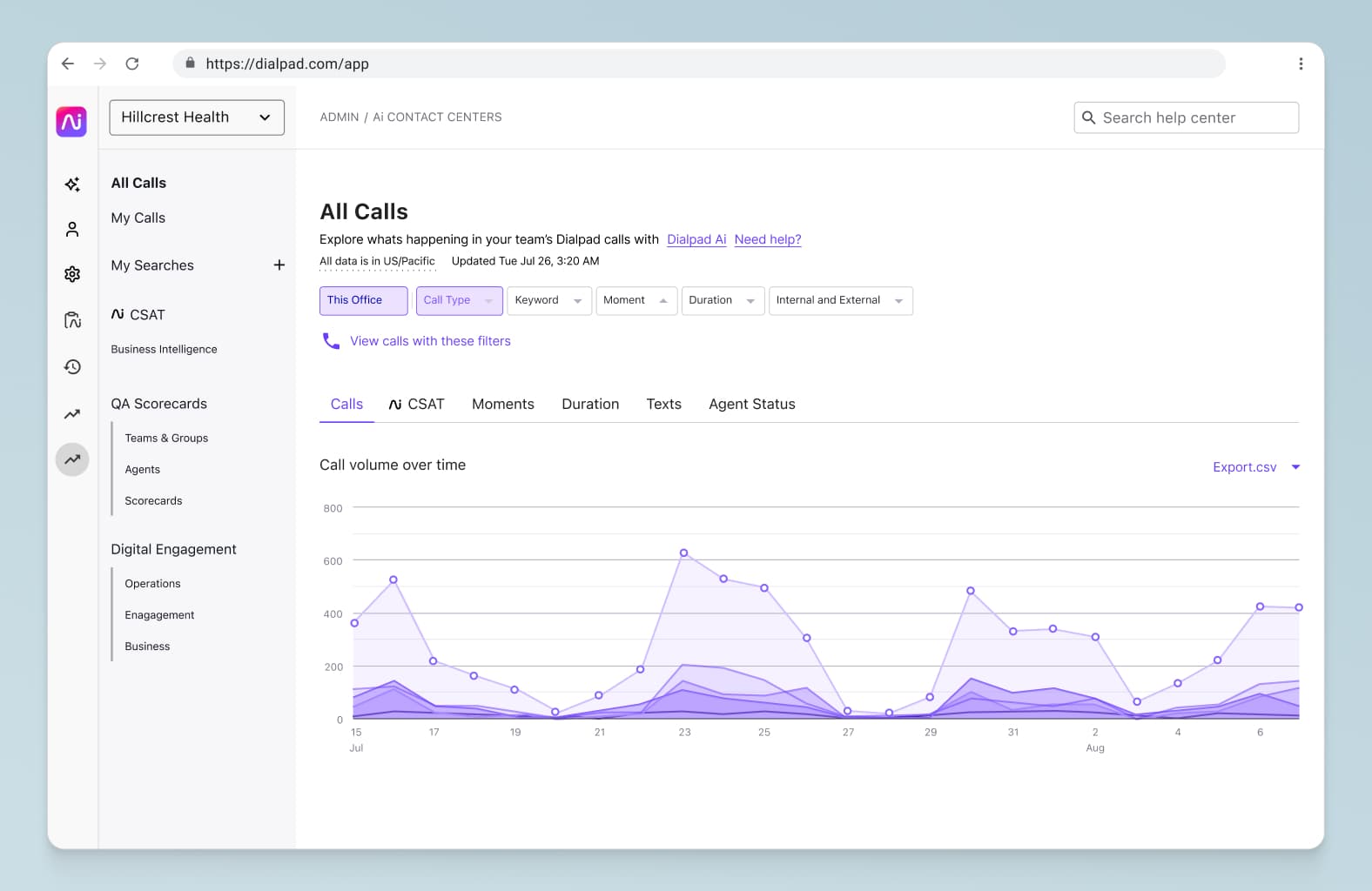
“Knowing when we need to have more or less people available from the heat mapping tool is great, as well as being able to see how many concurrent calls someone’s getting during that time,” says Wendy.
4. Don’t compromise on functionality just because you have a startup budget: Builder Prime
Builder Prime is a customer and project management software tool for contractors, and even though the company wasn’t quite big enough yet to need a contact centre platform, Jonathan (Builder Prime’s Founder) still wanted an all-in-one business phone system solution that could help improve its customer support.
He had three requirements: an integration with Front, their help desk / email ticketing software, a call routing feature (so Jonathan could stop taking calls from his personal mobile phone number), and the ability to scale with his company as it grows. (The bonus: Dialpad has a startups program that makes things even more cost-effective.)
With Dialpad, he got all three. “It helps our team be more productive day-to-day and provide the best possible service to our customers,” says Jonathan. “We can answer more calls and provide quicker help for our customers because of the call routing and collaboration features.”
5. If you're providing 24/7 support, then so should your contact centre software: Vend
Vend is a retail point-of-sale SaaS solution used by businesses worldwide. The global startup serves more than 18,000 stores in over 140 countries, with some big-name customers like NASA, Harvard University, and Disney. So, keeping these customers happy and providing great customer service is, as you can imagine, pretty important.
With its headquarters in New Zealand, its support team is distributed across five major markets on three continents, so Vend needed a remote-friendly phone system or contact centre platform.
So, they went with Dialpad, which lets their IT team set up new offices and accounts for new employees in literally minutes:
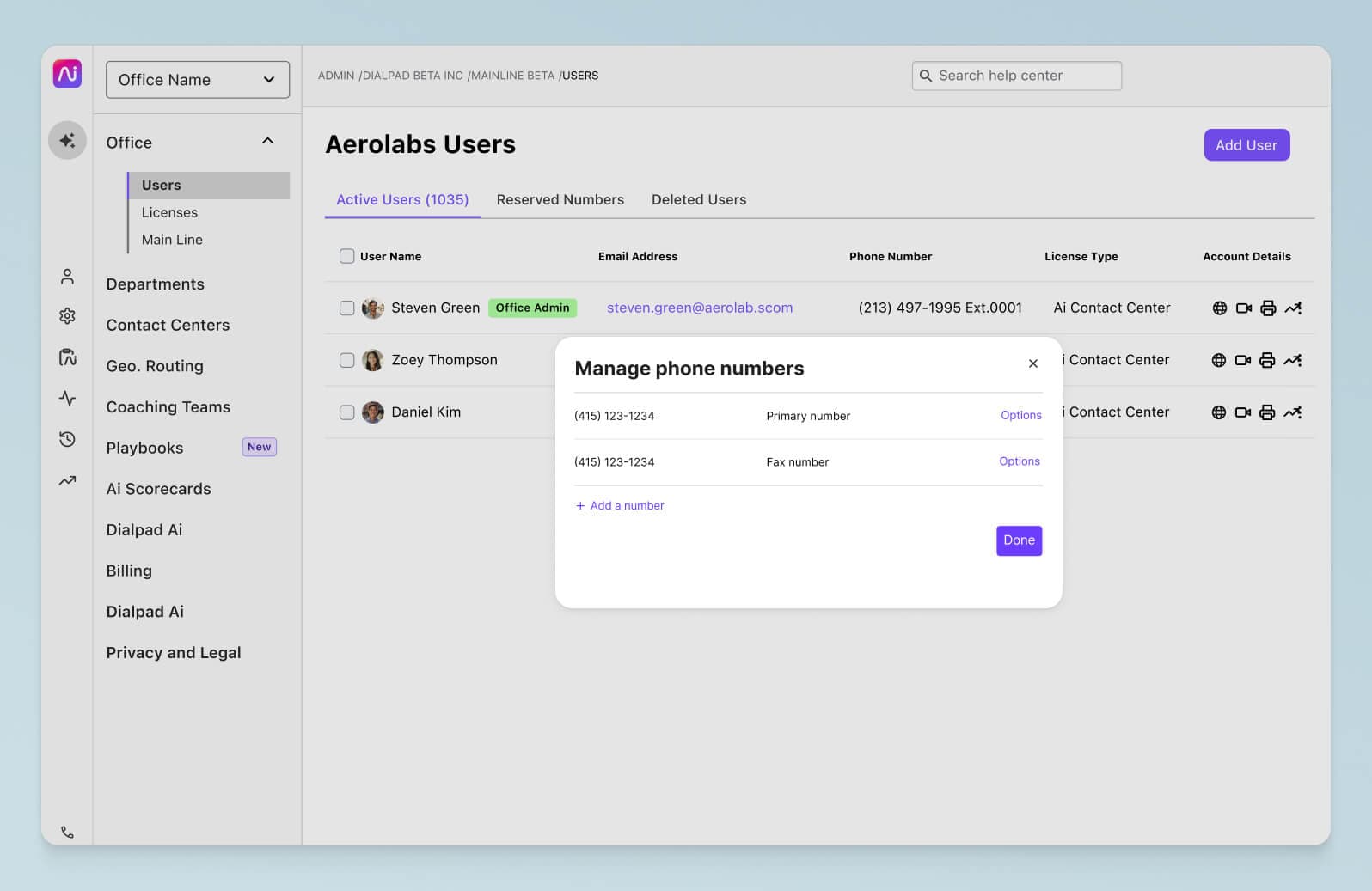
“With Dialpad, my team can provision users and spin up new offices around the world in an instant,” says Andre Morgan, Vend’s IT Manager. “We provide 24/7 international support for retailers that need assistance, and Dialpad makes the customer experience far more seamless.”
6. Plan your customer support with future growth plans in mind: Katalyst
Katalyst is a cloud-based fintech startup whose software helps restaurants consolidate their operations more affordably. Being a relatively young startup, Katalyst was in the unique position of not having a phone system at all!
So they got to start fresh. Dan, Katalyst’s CEO, knew that he wanted a versatile communications platform that not only let his employees communicate with each other, but also provide excellent support for their customers—while being cost-effective.
Because of that, he chose Dialpad as their unified communications platform.
“Dialpad allows us to continuously add on lines, call centres, and departments as we grow internally,” says Dan. “This allows us to be extremely agile in a cost-effective way.”
And like many startups, Dan and his team like being able to work outside of the office too, which they can also do with Dialpad. “I love how you can be on the go without being disconnected from the office. It allows our team to remain agile in a changing environment,” says Dan.
If I were to hazard a guess, I’d say that Dialpad’s call flip feature would be handy here. I use it myself pretty regularly—basically, I can start a call from my computer, then “flip” it seamlessly to my cell phone if I have to step away (or take my dog for a walk). And it works vice versa too. The magical thing about it is that the call flip is so seamless that the person on the other end has no idea!
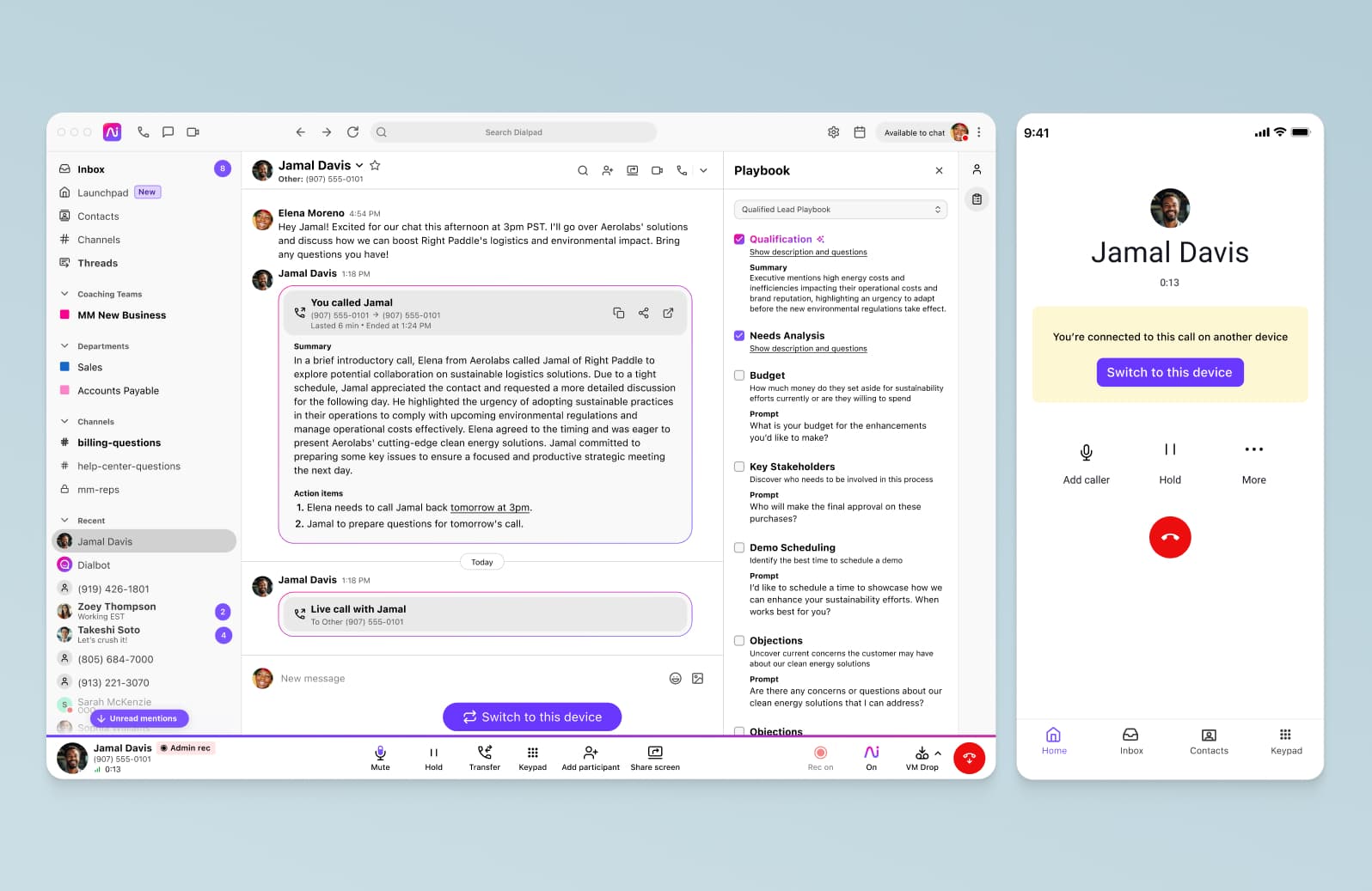
Want to provide a better SaaS customer support experience?
Being a SaaS enterprise ourselves, our team knows how important it is to be able to provide a good customer experience, from the sales to onboarding stage.
That’s helped inform how we designed Dialpad Ai Contact Centre, from how easy it is to use, to the more technical aspects like its HD call quality (no matter where in the world you are).
If you’re looking for the best SaaS customer support tool for your business or organisation, why not check out how Dialpad works by taking a product tour? Our team of contact centre experts can walk you through the powerful AI features that we’ve built in-house, how you can set up a contact centre in literally a few minutes, pricing, and more.
A platform designed for SaaS customer support
Book a demo of Dialpad Ai Contact Centre to see how it can support your SaaS company's agents and supervisors. Or, take a self-guided interactive tour of the app on your own first!








